Dams have been constructed through the many centuries to fulfill the needs of humankind as well as save them from many disasters. Dams not only provide water for society but also protect us from river and marine floods, providing hydroelectric power, irrigation water, and a pleasant environment. As we see the old dams aging and the new ones being constructed, dam monitoring becomes more significant than ever.
In this article, we look at the case study of Idukki Dam Monitoring, one of the highest arc dams in Asia, by Encardio Rite.
Idukki Dam – An Overview
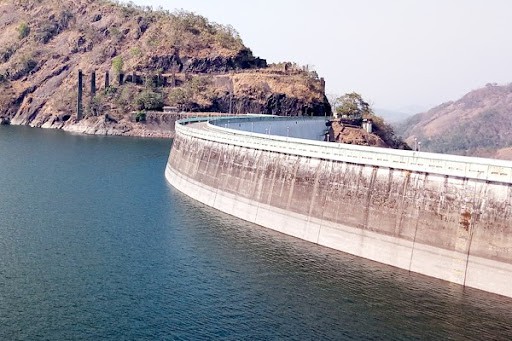
Idukki Dam is a thin arc dam located across the Periyar River in a ravine between two granite hills known as Kuravan and Kurathi in Kerala, India. The concrete, double-curvature parabolic dam is one of the highest arc dams in Asia with a height of 168.91m. Completed in 1973, the dam currents measure 365.85m at its top with 7.68m width at the top and 19.81m on the bottom.
Idukki Dam is owned by the Kerala State Electricity Board (KSEB) and was constructed with two other dams at Cheruthoni and Kulamanu. The three dams create an artificial lake.
Together, they harness a major portion of the power potential of Periyar, the largest river in Kerala. They do so by creating a reservoir, diverting water through a conductor system consisting of a power tunnel and two underground pressure shafts to an underground powerhouse in Moolamattom.
The installed capacity of the powerhouse is estimated to be 780 MW with 6 units of Pelton-type turbines that have a power generation capacity of 130 MW each. The water of the Periyar Riverthe falls through a drop of about 669.2 m, producing power in the underground powerhouse.
Idukki Dam – Purpose of Monitoring
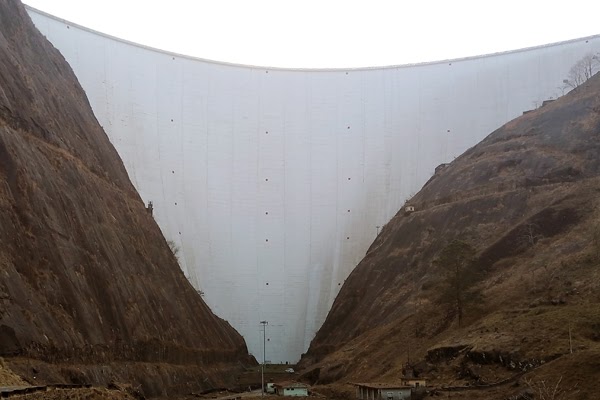
Encardio Rite was assigned the contract for Real-Time Early Warning Structure Health Monitoring and Data Interpretation (RESHMI). RESHMI plays an essential role in dam safety and risk management. It is a part of the Dam Rehabilitation and Improvement Project (DRIP). The essential purpose of RESHMI is as follows:
- Improve the reliability of the dam by looking after its safety and longevity.
- To identify any early signs of failure or potential danger to the dam and implement corrective measures without resulting in a complete shutdown or failure.
- Acquire data on the dam’s performance in the real world to improve future designs.
- Study the impact of any natural event on the dam’s structural integrity.
- To propose the maintenance of the dam in an effective & efficient manner.
| Also Read: Instrumentation & Structural Monitoring of Dams |
Encardio Rite’s Scope of Monitoring Work
Encardio Rite was entrusted with the following responsibilities during the monitoring of the Idukki Dam.
- Supply and Installation of Geotechnical, Geodetic, and Hydro-meteorological sensors.
- Monitoring the existing working sensors installed in the structure.
- Programming and authorizing data loggers with wireless data transmission and robotic total stations with in-house developed control boxes
- Providing seamless data storage and backup servers
- Setting up Drishti, Encardio Rite’s in-house data management software for real-time monitoring and prompt alerts.
- Lightning surge protection and earthing
Idukki Dam Monitoring – Instrumentation
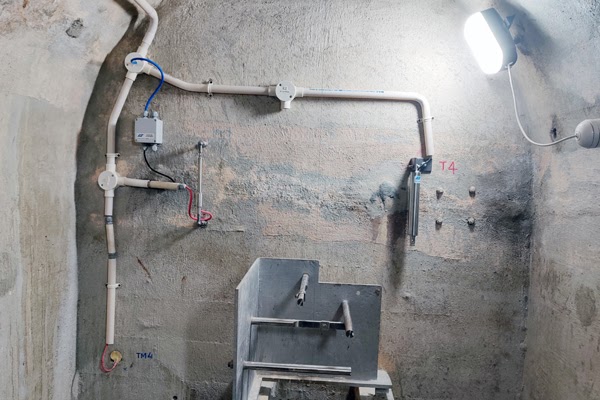
| Instrument | Installation Area | Purpose |
| Uplift pressure meter | Dam Galleries(Drilled Drains) | Monitor the uplift pressure on the dam |
| Crack meter | Crack Joints in dam galleries | Monitor the opening of existing cracks/joints between different blocks of the dam. |
| Tiltmeter | Vault at the top of the dam & other areas | Monitor the tilt of the dam structure |
| Concrete Temperature Meter | Galleries in inclined holes, towards the downstream side of the dam | Monitor the concrete temperature |
| Water Temperature Meter | Suspended in water at different depths towards the upstream side of the dam | Monitor water temperature close to the dam’s face |
| Flow Meter | Dam drains in galleries along with V-notch | Monitor the rate of water seeping through the dam’s foundation. |
| Water Level Sensor | Top of the nearby dam (Cheruthony) | Monitor the water level of the reservoir. |
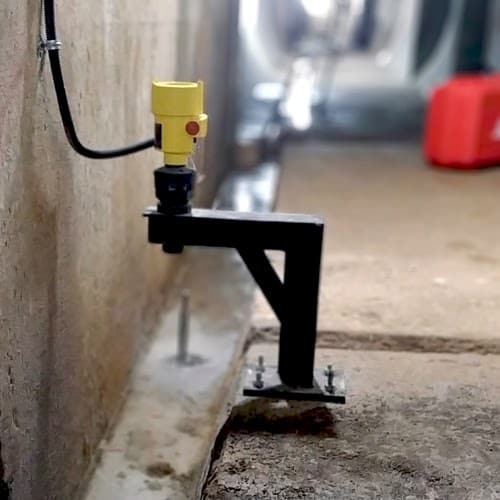
Apart from the above-mentioned sensors, the following instruments were employed.
- Weather Station comprising air temperature, wind speed & direction, relative humidity, solar radiation, barometric pressure, and rain gauge.
- Data Loggers were installed to accumulate data from the sensors. The data loggers have GSM/GPRS modem for wireless data transmission to the central server.
- Prism targets were installed at the downstream intrados (concave surface) of the arch dam. For the monitoring of the prism targets, two robotic total stations were set up.
- An extensive earthing & lightning protection system was set up on the site as the location of the Idukki Dam was prone to thunderstorms and lightning.
Instrumentation Challenges
The prism target installation on the concave side of the double arch dam proved to be very challenging. There was much preparatory work and arrangements to be carried out for the installation. The location was difficult to reach due to the double curvature-parabolic surface of the intrados of the dam and the huge height of the dam.
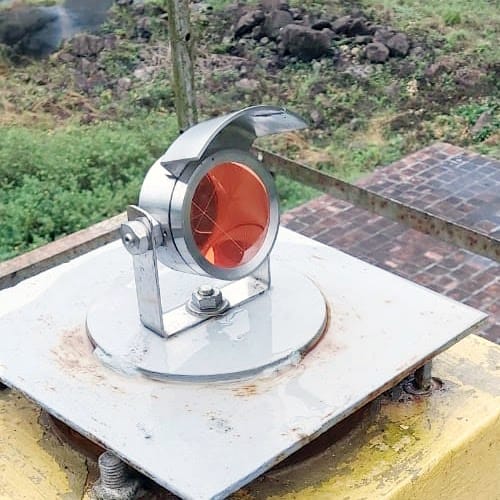
A trained and qualified person with a proper license to work at heights carried out the installation of the sensor. A rope access technician controlled and assisted the movement of the person in charge of the installation.
An experienced surveyor was situated at the robotic total station to ensure the correct direction of the prism target. In the end, the sua ccessful installation of the prism target was quite an achievement.
| Also Read: A Guide on Geotechnical Instruments: Types, & Application |
Data Collection & Presentation
Encardio Rite ensured that all the data from the sensors were readily available to the concerned people. Real-time monitoring from Geotechnical, Geodetic, and Hydro-meteorological sensors was accessible to the consultant/contractor at their desk.
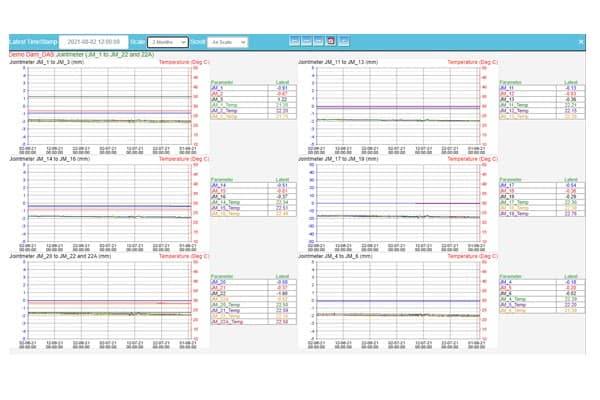
The data was collected from Geotechnical and Hydro-meteorological sensors by the compact data loggers and data acquisition system with a suitable interface unit and BusMux.
Robotic total stations collected and transmitted data from prism targets at desired frequencies. The station was managed remotely with the help of an in-house control developed control boxes with suitable software. The collected data is then transmitted to a central server in the control room.
The Drishti database management system of Encardio Rite makes the data accessible to all the stakeholders in near real-time with advanced alerts and warning systems. It helps to precisely evaluate the field data and implement corrective actions when required.
Training provided by Encardio Rite
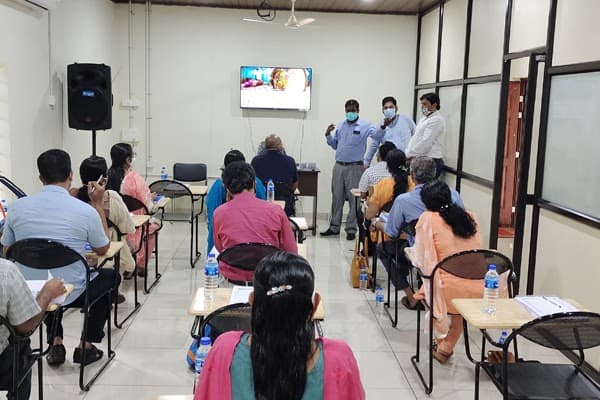
An extensive training program was conducted for the geotechnical, geodetic, hydro-meteorological, seismic sensors, and data acquisition systems installed. The Encardio Rite expert team provided a training program to the KSEB site team. Extensive training was also presented on the Drishti database management system, data presentation, evaluation, interpretation, etc. Both classroom and field training were included in the training.